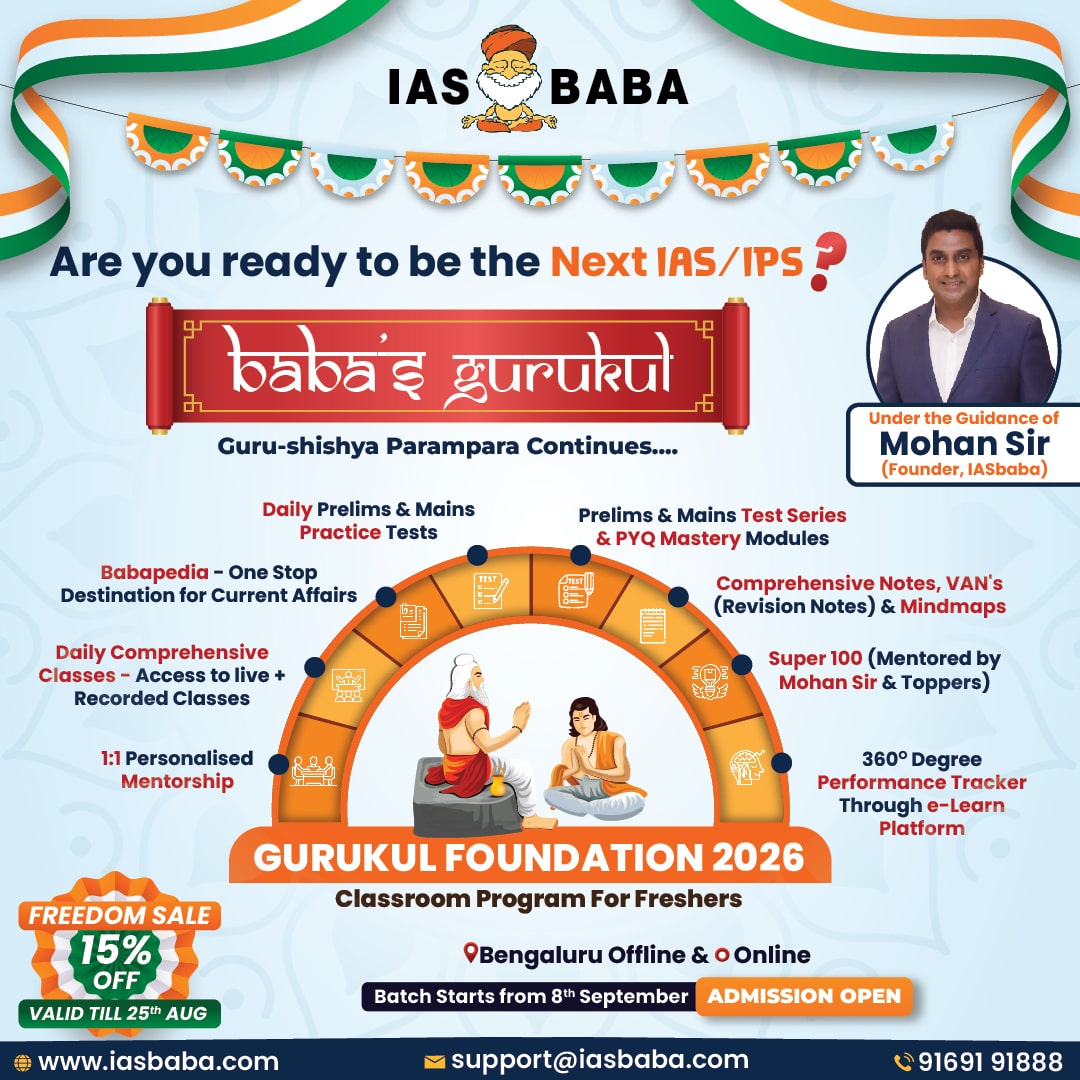Think and Learn, TLP Mains 2015, UPSC, UPSC Mains- Think and Learn-2015
TLP: GS Mains Synopsis [Day 88 & 89]
Q.1) The recent Supreme Court verdict barring the display of pictures of ministers and leaders in government advertisements except the President, the Prime Minister, and the Chief Justice of India, though well intentioned, doesn’t put necessary checks on wasteful expenditure on advertisements and also ignores the federal structure. Do you agree? Critically analyse.
The Top Answer for this Question is written by – Rahul Agarwal
Ans) Government has the role of trustee of the public money. Therefore, it is supposed to utilize this money judiciously for the welfare of public. But off late it was observed that government is wasting huge amount of money on advertisements, which promote political benefits and cult formation,without any visible public utility. Taking cognizance, Supreme Court in a recent verdict barred display of ministers and leaders on the government advertisement with exception of president, prime minister and chief justice of India.
But, this ruling has been opposed on the following grounds:
A. Barring the publications of the picture of chief minister, is against the spirit of federal character as it puts prime minister higher footing than chief ministers
B. We have incidences of government publishing whole page advertisements in news papers, without pictures, which nonetheless results in huge expenditure
C. Government also argues that, public have the right to know government policies and the architects behind it, and hence judgement is counter-productive.
Although, there is no denial, that often advertisements are abused by governments for partisan benefits, but having a blanket ban is not a optimal solution. Supreme Court may direct government to evolve a model code on government advertisements through consultation and public may hold the political class accountable for its violation.
Q.2) Hard cases often make bad laws. After the ‘Nirbhaya’ incident, the criminal justice system saw a major ovehaul including sexual crimes committed by the juveniles. However, the juvenile criminal jurisprudence in India needs to strike a balance between retributive and reformative approaches. Critically examine.
The Top Answer for this Question is written by – Another Brick In The Wall
Ans) The infamous NIRBHAYA case, put the whole nation to debate on the provisions regarding juvenile justice in the statute book. There have been following demands by the different sections of the society
1) Lowering the bar for being categorised as juvenile.
2) Bring harsher punishments in the juvenile category.
The argument frequently given by the supporters of harsher norms for juveniles is that the society has evolved much over time and the technology has been corrupting the young minds in their early ages. The demand is many a times a reflection of sense of revenge.
The UN has accepted that the age of 18 for as the base for juveniles and says that the mind is not fully developed till this age and hence needs a softer treatment.
In any case the jurisprudence of Indian justice system is reformative and not punitive. A harsher punishment for a juvenile will only make him more provocative but also lessen his changes to transform.
Nevertheless the menace created by juveniles is on a rise as the National Crimes Bureau Report states it. But the solution lies in better schooling, better parenting, better rehabilitation centres rather than harsher punishments.
Q.3) The Shimla Agreement concluded in the aftermath of the 1971 war with Pakistan turned out to be a lost opportunity for India. Despite being in a formidable position or rather the clear winner of the conflict, India hardly behaved as the winning side. Do you agree with this argument? Critically comment.
The Top Answer for this Question is written by – Amruth Kumar
Ans)
Image 1 – https://a.disquscdn.com/uploads/mediaembed/images/2859/1373/original.jpg
Image 2 – https://a.disquscdn.com/uploads/mediaembed/images/2859/1377/original.jpg
Q.4) The controversy surrounding the Hindu Code Bill immediately after India became a republic and the political acumen shown by the contemporary leaders to tackle the crisis exemplifies the importance of political will in pushing difficult reforms. What clues can be taken from history in the context of the debates over the uniform civil code? Discuss.
The Top Answer for this Question is written by – Cadet1970
Ans)
Image 1 – https://a.disquscdn.com/uploads/mediaembed/images/2858/8463/original.jpg
Image 2 – https://a.disquscdn.com/uploads/mediaembed/images/2858/8462/original.jpg
High Order Thinking
Q.1) The incidents of cheating and fake certificates are symptomatic of the bigger rot that has set into the education system of India. The deeper problems lie in the absence of a robust regulatory framework, lack of institutional autonomy and neglect of mass education at all levels. Critically examine the issue.
The Top Answer for this Question is written by – Amruth Kumar
Ans)
Image – https://a.disquscdn.com/uploads/mediaembed/images/2859/1478/original.jpg
Q.2) While India strives to better it’s record on the front of indigenization of technology, the domestic ecosystem is not conducive for measures like joint development and transfer of technology. Critically comment.
The Top Answer for this Question is written by – SBT57
Ans)
Image 1 – https://a.disquscdn.com/uploads/mediaembed/images/2859/9503/original.jpg
Image 2 – https://a.disquscdn.com/uploads/mediaembed/images/2859/9504/original.jpg
Image 3 – https://a.disquscdn.com/uploads/mediaembed/images/2859/9502/original.jpg














